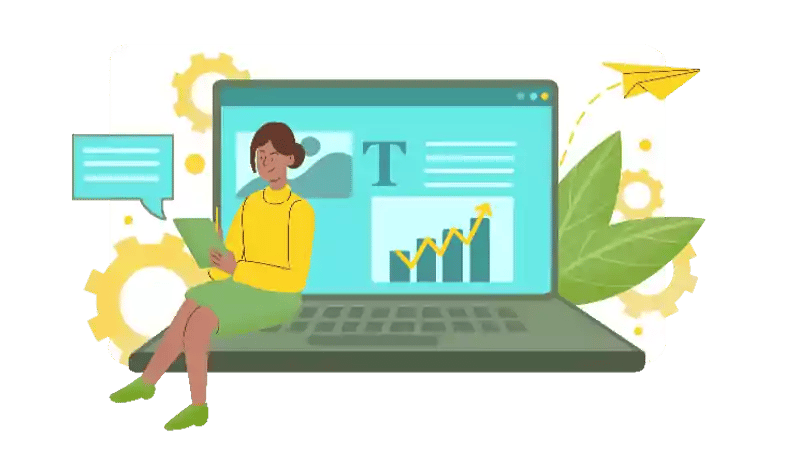Elevate your content with HubSpot Marketing Hub for content marketing. Discover how our strategies and HubSpot's tools drive success.
How to Use Episodic Content Marketing to Grow Your Business
Imagine a marketing campaign so captivating it sticks with you for decades. That happened with a series of instant coffee ads (Nescafé Gold Blend) from the 1990s. This is episodic marketing at its finest. The campaign even has its own Wikipedia entry.
The storyline revolved around a woman's budding relationship with her neighbor and kept viewers guessing 'will they or won't they?' for years.

Good content alone isn't enough anymore. In a flooded market, it's easy for your message to get drowned out. So, if great content is just the baseline, what's the secret to staying afloat and standing out?
Why Does Episodic Content Matter?
-
70% of marketers say episodic content is effective at driving brand awareness. Episodic content has the potential to be a robust tool for establishing brand recognition. Successful execution of episodic content can instill a feeling of anticipation and enthusiasm for your brand, ultimately leading to heightened awareness and consideration.
-
52% of consumers say they are likelier to purchase from a brand that creates episodic content. The power of episodic content is evident because it can increase the likelihood of consumers purchasing from brands that create engaging and informative episodes. You can drive up your sales and revenue by providing a reason for your audience to return for more.
-
Episodic content can increase customer lifetime value by up to 30%. Episodic content can be a game-changer for your business. It's not just about creating engaging and informative episodes; it's about creating a valuable asset that can be used to nurture and retain your customers. With episodic content, you can increase customer lifetime value, significantly impacting your bottom line. If you want to boost your profits, consider implementing an episodic content strategy.
-
Episodic content can increase website traffic by up to 200%. This statistic shows that episodic content can be a powerful tool for driving traffic to your website. When creating episodic content, you create valuable content visitors want to read, watch, or listen to, leading to increased website traffic.
-
Episodic content can increase social media engagement by up to 300%. This statistic shows that episodic content can be a powerful tool for engaging your audience on social media. When creating episodic content, you create shareable content, increasing social media engagement and brand awareness.
Episodic content marketing is one way to set your brand apart from the competition.
What is episodic content marketing?
It can be an effective way of storytelling that draws audience members back for more.
Episodic content marketing is content broken into bite-size pieces. The content is a story with a plot that reveals more to the viewer with each episode.
Tired of your marketing efforts fizzling out? Keeping potential customers engaged is challenging in a world of short attention spans. Episodic content marketing could be your solution. This powerful strategy creates a built-in reason for your audience to return repeatedly, nurturing them toward conversion.
How to create episodic content
1. You need strong characters at play:
To ensure the success of episodic content, captivating characters and a storyline that resonates with your audience are essential. Engaging your viewers with relatable characters that reflect the culture and voice of your brand is critical. Understanding your target audience is crucial, and detailed buyer personas are vital. Developing an original series based on your buyer personas' core interests will drive increased traffic and inquiries to your website.
2. You need a compelling narrative:
Once your character ideas are generated, decide on the number of episodes you need and create a storyboard to help develop how the story will unfold across the episodes.
You want to tell a story that shows a struggle, is accurate, and feels non-scripted. Embrace transparency and offer a behind-the-scenes view. Ultimately, you want your episodic content to differentiate your brand and build customer connections. To be in a class by yourself, you must create branded, entertaining content as part of a dedicated series for your targets' dreams, fears, and quirks. Tell your story in a unique way.
Researchers have determined that during high-suspense moments your brain narrows in on what you see and focuses your attention on the story. When there's no suspense, your brain allows you to be distracted and focus on your surroundings. So get your audience lost in the narrative and keep them coming back by creating that level of suspense in your episodic content.
After all, the best episodic content is entertaining as much as it is educational. You build attention, likability, and trust by entertaining your target audience. This allows you to educate them throughout their buying journey.
What's the payoff?
Creating content is a constant balancing act between quality, distribution, and frequency. Creating episode-style content allows you to drive these three elements simultaneously while being more efficient with time and resources. It is a great way to increase blog traffic.
Think of where people go to take a quick break. Often it's watching content on Netflix or YouTube. It's entertaining and educational in some way. Brands realize that when developing their episodes, they are setting themselves apart from the competition.
When you take the time to build episodic content, you're thinking about topics, series, seasons, and themes. This applies to both video and word content. When you do this well, it's a win-win for both you and your customers. You build out your content, attract potential customers, and provide them with quality content and information.
Be sure to leave them wanting more.
A time-tested show biz adage says you should always leave the audience wanting more. That is also the basis for episodic content marketing.
Take a big piece of content and dole it out in small installments. Taking a 10-point post and creating a series of single-point posts adds to a more comprehensive narrative.
And you've built a reason for your audience to return for more. You've incentivized the target market to subscribe to your email list or follow you on social media because they don't want to miss the next installment. And you can develop a narrative arc that can add to your brand's thought leadership and authority.
What's required to shift from your current content development structure to an episodic approach?
-
Be sure you have a unifying theme for the entire run.
-
Each piece of content must create anticipation for the next piece.
-
Share each episode on social media and your company emails and ask for feedback.
-
Post specific questions to encourage engagement.
You Might Also Like This Post:
Key benefits of episodic content
1. It's memorable
We tend to have stories that we carry with us for decades. What do these long-lasting stories have in common? They are well-developed and memorable because we became invested in the outcome.
Content marketing aims to make people remember what you're saying so they will return and share it with others. Using episodic content, marketers can extend a story and make it more significant in the audience's memory.
A cliffhanger or call to action at the end of each installment makes people want to hear the next installment. The suspense keeps your audience coming back.
2. It makes your strategy last longer
Take a blog post and break it into five or ten fleshed-out posts. You've just extended the life of that initial single blog post by a factor of five or ten through some strategic planning and cliffhanging details.
3. It's shareable
Most content is shareable, but how often do people share a traditional ad or self-promoting social post? The answer is not very often. But they do share stories all the time. Even if the stories are ads, they present a new twist on the traditional model.
Words spark emotion in readers, and storytelling is human nature. Episodic content allows you to capitalize on this because you get to develop a cast of characters and plot lines and satisfy the readers with a powerful ending.
How do I measure success in Episodic Content Marketing?
Having suitable KPIs is a critical success factor in measuring and managing the successful implementation of episodic content:
-
Increased engagement: Episodic content can keep audiences engaged over time, as they are eager to discover what happens next in the story. You can measure engagement by tracking metrics such as:
-
Page views: The number of times your episodic content is viewed.
-
Time on page: The amount of time users spend on your episodic content.
-
Social media engagement: The number of likes, shares, and comments on your episodic content on social media.
-
-
Improved brand awareness: Episodic content can help to improve brand awareness by exposing your brand to a broader audience. You can measure brand awareness by tracking metrics such as:
-
Brand searches: The number of times your brand is searched for online.
-
Brand mentions: The number of times your brand is mentioned on social media.
-
Brand awareness surveys: Measure how familiar people are with your brand.
-
-
Lead generation: Episodic content can be used to generate leads by providing valuable information that audiences are interested in. You can measure lead generation by tracking metrics such as:
-
Contact form submissions: The number of people who submit contact forms on your website.
-
Email subscribers: The number of people who subscribe to your email list.
-
Leads generated from social media: The number of leads generated from social media interactions with your episodic content.
-
-
Sales: Episodic content can be used to drive sales by promoting your products or services throughout the series. You can measure sales by tracking metrics such as:
- Product sales: The number of products sold due to your episodic content marketing campaign.
- Conversion rate: The percentage of people who view your episodic content and then go on to buy a product.
- Average order value: The average amount of money customers spend buying a product due to your episodic content marketing campaign.
-
Return on investment (ROI): ROI measures how much money you make from your investment in episodic content marketing. You can calculate ROI by tracking your expenses and sales and then dividing your sales by your expenses.
Track these metrics over time to see how your episodic content marketing campaign performs.
Episodic Content FAQs
- Video is a great way to tell a story and engage audiences.
- Blog posts can be used to provide more detailed information about the topic of your series.
- Infographics can be a great way to break down complex information into easy-to-understand visuals.
- Podcasts are a great way to tell a story in a more intimate way.
- Social media posts can be used to promote your episodic content and keep audiences engaged.
Here are some common mistakes to avoid when creating episodic content marketing:
- Not having a clear story. If you don't have a clear story, your audience will quickly lose interest.
- Not creating engaging content. Your content needs to be engaging in order to keep your audience coming back for more.
- Not promoting your series consistently. If you don't promote your series consistently, your audience will forget about it.
- Not tracking your results. It is important to track your results so that you can see what is working and what is not.
- Keep your episodes short and to the point. People have short attention spans, so it is important to keep your episodes short and to the point.
- Release your episodes on a regular schedule. This will help to build anticipation for your next episode and keep your audience engaged.
- Use social media to promote your episodes. Social media is a great way to promote your episodes and keep your audience engaged.
- Track your results and make adjustments as needed. It is important to track your results so that you can see what is working and what is not. This will help you to improve your campaign over time.
Here are some examples of successful episodic content marketing campaigns:
- Serial: Serial is a podcast that tells the story of a murder in Baltimore. The podcast was a huge success, with millions of listeners tuning in each week.
- The Crown: The Crown is a Netflix series that tells the story of Queen Elizabeth II. The series has been praised for its historical accuracy and its engaging storytelling.
- Stranger Things: Stranger Things is a Netflix series that tells the story of a group of kids who fight supernatural forces. The series has been a huge hit
This content is also available in:
- German: Wie Sie Episodic Content Marketing zum Unternehmenswachstum nutzen
- Spanish: ¿Cómo Impulsar su Negocio con Content Marketing Episódico?
- French: Le marketing de contenu épisodique: boostez votre entreprise
- Italian: Come utilizzare il content marketing episodico?
- Chinese: 如何利用系列内容营销来发展您的业务










Leave a Comment